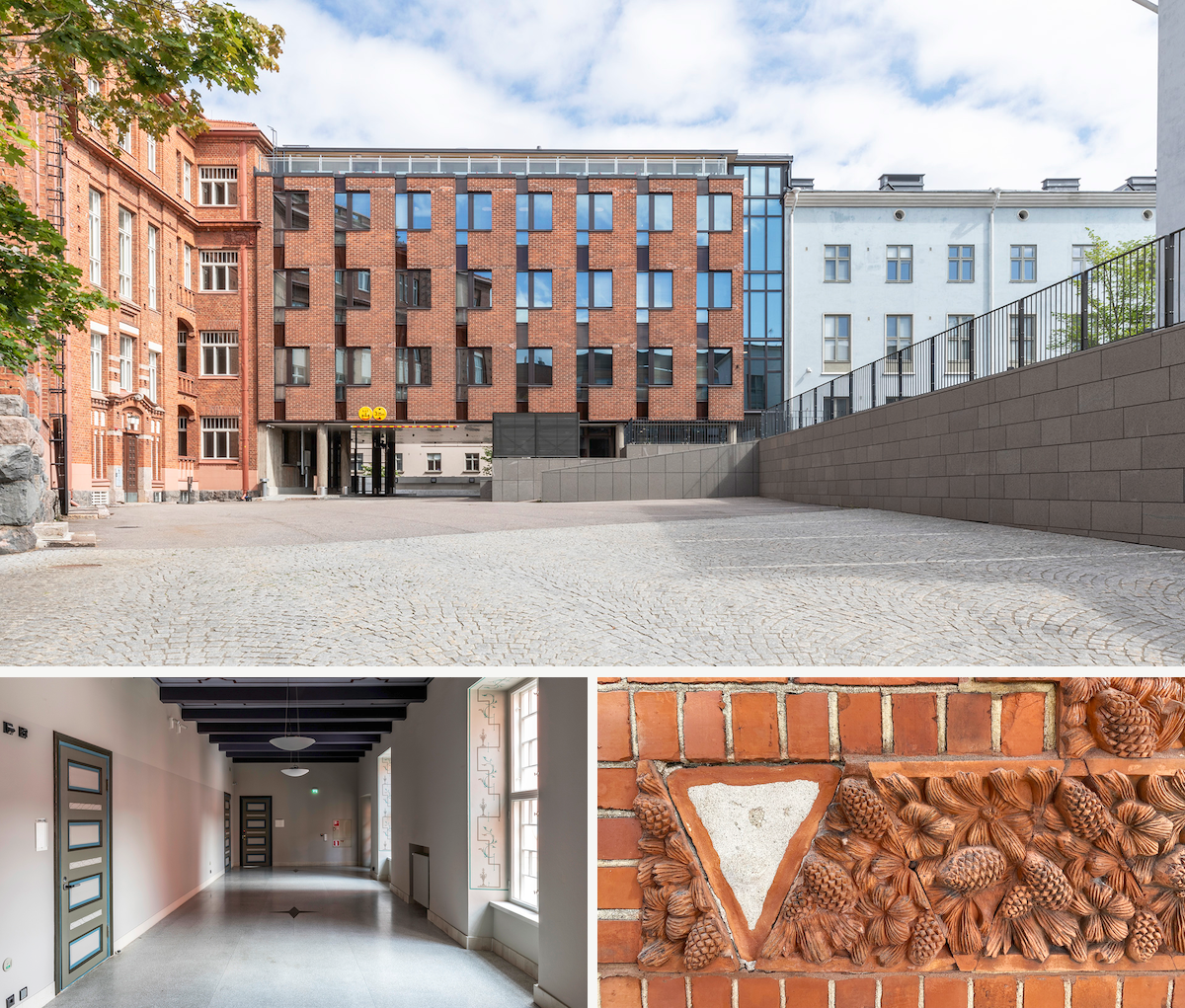Finnish Architects in the Spotlight: LPR Architects

LPR Architects
The first Spotlight of the fall shines towards Turku, where the architectural office LPR Architects, founded over 50 years ago, is based. Known for their ability to balance existing with new, the firm's portfolio ranges from museum buildings to educational facilities and from theatres to churches.
LPR Architects believe in continuity and the coexistence of new and old. Founded in 1973, the office is particularly known for its many renovation and refurbishment projects, the most recent example being the refurbishment of the University of Helsinki's Siltavuorenpenkere campus buildings – just in time for the start of the new semester.
Just like with new construction, LPR's renovation projects also start from this day. New elements that complement the old aim for subtlety but are firmly rooted in the current design principles: “The existing is valued and the new is humble, but at the same time clearly of our time”, says Heli Väliharju, CEO of LPR Architects. “The cornerstone of demanding renovation is to understand and respect the old, while modernising spaces to meet today's operational requirements, and listening to different user groups.”

LPR Architects' portfolio includes, for example, refurbishment and extension projects for the Turku City Theatre and Turku Art Museum, Ateneum's renovation and modification projects, and the Helsinki City Theatre's refurbishment. Projects such as these allow the office to use both creativity and problem-solving skills. Simultaneously, working with the existing ensures that the buildings receive the care they need and will be able to serve future generations, something that LPR finds particularly rewarding.
Particularly in restoration projects, the work of an architect is often considered more successful the less it is visible. "Placing building services in protected structures while respecting the original requires patience, but often also creative and open-minded problem-solving from both the architects and the entire design team," says Pauno Narjus, architect and partner in the firm.
"Each project has been demanding in its own way and each has had its own particular characteristics. It also makes our work very rewarding. No two cases are the same and finding a solution requires an investigative attitude," Narjus continues, comparing the work to that of a detective: "For example, in the refurbishment of the Helsinki City Theatre, the damaged ceramic tiles on the facades were replaced with new tiles made to the original designs. Fortunately, the drawings for the original tiles were safe in the archives. To ensure that the shapes, colours, and glazes of the new tiles closely matched the originals, numerous firing and glazing tests had to be conducted.”

LPR architects describe themselves as realistic visionaries. "One of the most important tasks of an architect is to ensure that the goals set by the client are carried through the project, which often lasts for years," says Heli Väliharju, "Along the way, the number of parties influencing the final result increases, and everyone must be taken into account, but without forgetting what we are actually doing and why." Even if the objectives set for the project must be changed along the way, one must be able to see the big picture, she points out.
For the office, successful work means not only achieving the set goals but also fostering interaction and mutual trust between the architect, the client, and other project stakeholders. Veera Rautaheimo, architect and chair of the board, refers to the values that have guided LPR's work for decades: responsibility, respect, reliability and humanity. "These are strongly connected to how we approach architecture, clients, and the environment, but also to how we relate to each other within the office."

Therefore, the secret to the office's longevity may lie in mutual understanding and shared goals – as well as balance. "Long experience combined with the enthusiasm of youth creates a suitable synthesis for everything we do," says Rautaheimo.
"As a planet, we are heading towards a situation where diminishing natural resources must be used to create a more sustainable and less environmentally damaging built environment,” Rautaheimo reminds. "We need to make better use of existing buildings and recycled materials. All of this requires research, product development, interdisciplinary collaboration, and above all, high-quality design."
Read more about LPR Architects’ work on their site through this link.
Finnish Architects in the Spotlight invites architects or architectural practices to share their values and design principles through images and short texts. See LPR Architects’ photo series on Archinfo’s Instagram.
All posts featured in the Finnish Architects in the Spotlight series can be found on Instagram by using the tag #FinArchSpotlight and all articles through this link.


